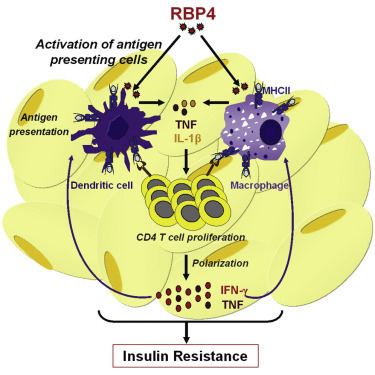Entrez 5950 | Ensembl ENSG00000138207 | |
 | ||
External IDs OMIM: 180250 MGI: 97879 HomoloGene: 4908 GeneCards: RBP4 | ||
Retinol binding protein 4 rbp4
Retinol binding protein 4, plasma, also known as RBP4, is a protein that in humans is encoded by the RBP4 gene.
Contents
- Retinol binding protein 4 rbp4
- Gene music using protein sequence of rbp4 retinol binding protein 4 plasma
- Function
- Clinical significance
- References
Gene music using protein sequence of rbp4 retinol binding protein 4 plasma
Function
This protein belongs to the lipocalin family and is the specific carrier for retinol (vitamin A alcohol) in the blood. It delivers retinol from the liver stores to the peripheral tissues. In plasma, the RBP-retinol complex interacts with transthyretin, which prevents its loss by filtration through the kidney glomeruli. A deficiency of vitamin A blocks secretion of the binding protein posttranslationally and results in defective delivery and supply to the epidermal cells.
Clinical significance
Retinol-binding protein 4 has recently been described as an adipokine that contributes to insulin resistance in the AG4KO mouse model. It is secreted by adipocytes, and can act as a signal to other cells, when there is a decrease in plasma glucose concentration.
Mutations in the RBP4 gene have recently been linked to a form of autosomal dominant microphthalmia, anophthalmia, and coloboma (MAC) disease. A unique feature of this disease is the maternal inheritance effect, when a fetus inherits a mutated copy of the RBP4 gene from its mother, but not from its father. The physiologic basis lies in pregnancy whereby the mutated gene product, retinol binding protein (RBP), has negative effects in transferring vitamin A from maternal liver storage sites to the placenta, and then again on the fetal circulation side when delivering vitamin A from the placenta to developing fetal tissues, most notably the developing eye. This 'double whammy' effect does not exist when the mutant RBP4 gene is inherited from the father. The above mechanism is separate from previously known types of maternal inheritance effects such as genomic imprinting, mitochondrial inheritance, or maternal oocyte mRNA transfer. The authors of the above study cite the potential of vitamin A supplementation in pregnant females who are known to carry an RBP4 mutation with retinyl ester which utilizes an RBP-independent pathway to deliver retinoids from the maternal intestines directly to the placenta and ultimately is uptaken by the fetus. The key would be to supplement during the first several months of life when the eye begins to develop, as supplementing later in pregnancy would be too late to avoid any potential MAC disease.
